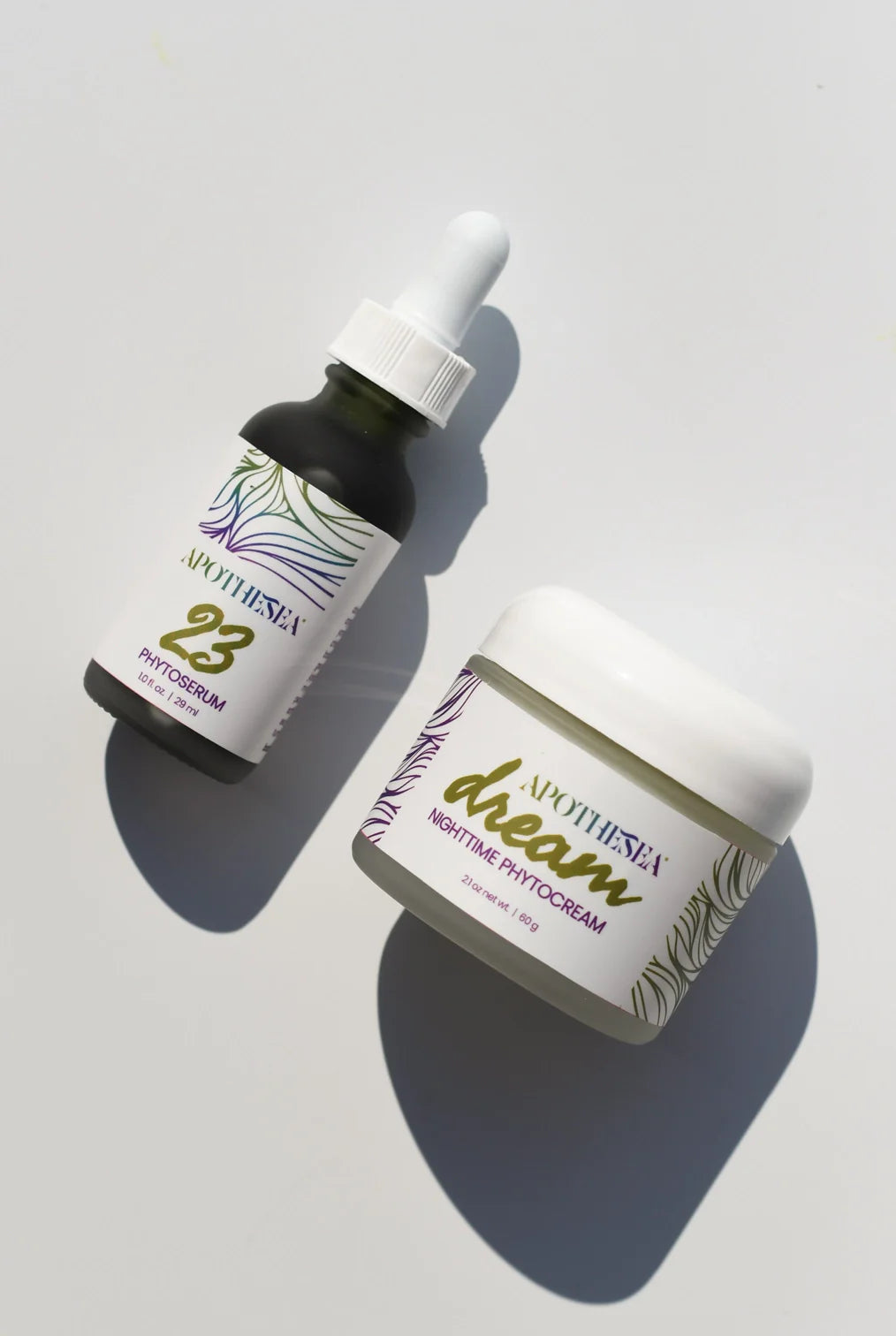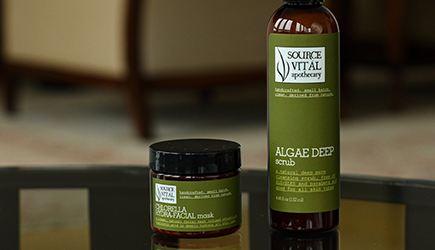How to Use Holistic Nutrition for Overall Good Health

Food is our fuel. It supports healthy metabolism, circulation, and digestion … the basic bodily functions. Did you know that food is also the most physical way to affect change in the body? Read on to find out why what we eat is so important and how holistic nutrition can make your body and skin look vital and healthy, and keep you feeling great overall.
How Food Affects Our Health
Obviously, an imbalanced diet influences our weight, but it also affects things you can’t see. Regularly consuming unhealthy foods can up the risk of developing serious health issues, like cancer, heart disease, and diabetes. Dental issues, migraine, and depression are more concerns of an unhealthy diet.
Research shows that the average American family today spends more of their food budget on eating out than families of four decades ago. With a fast food restaurant on almost every corner, no surprise there. While the number of fast food restaurants has doubled since 1977, the number of obese Americans has doubled too. The high amounts of fat, sodium, and sugar in fast food is also linked to everything from acne to high cholesterol, and research shows that Type 2 diabetes has also doubled in the past three decades
What Is a Well Balanced Diet?
It seems as though a new “perfect” is always cropping up. Eat more fat, eat less fat, stay away from carbs, don’t eat fruit. Keeping up can be exhausting.
The United States Department of Agriculture (USDA) recommends eating a balanced diet of vegetables, fruits, whole grains, low-fat dairy, and lean protein. USDA advocates keeping calories from added sugars, saturated fats, and sodium to a minimum.
Wondering what to do if you are vegan, gluten-free, lactose-intolerant, or any other dietary concerns? This is where holistic nutrition comes in. Rather than simply following a diet, take into account how eating certain foods makes you feel, your ideals, and create a diet that is best for YOU. Let’s dig a bit deeper into each of the food groups to determine which foods you’d like to make room for in your daily routine.
Three Degrees of Carbs
Oh, the dreaded carb. We are advised to steer clear of these delicious nuggets to keep muffin tops at bay, stop our skin from premature aging, quell headaches, and a long list of other maladies. But not all carbs are created equally.
There are three types of carbohydrates — complex carbs, simple carbs, and refined carbs. Complex carbs include potatoes, whole grains, tubers, starchy vegetables and legumes, and hit the blood stream gradually. These are the healthiest form of carbohydrate, the ones that give you lasting energy without the crash and burn effect.
Simple carbs hit the blood stream more quickly than complex carbs, but slower than refined. They include fruits and refined pasta.
Then there are the refined carbs. You know them as cookies, cakes, candy bars, and other treats that taste good but treat the body wrong. Not only do they hit the blood stream rapidly, but have no nutritional value and are addictive, leaving your body craving more and more.
Is Fruit the Bad Guy?
Fruit has gotten a bad rap lately by those touting sugar-free diets. As mentioned above, fructose is a simple carb. They are also the body’s cleansers, easy to digest, packed with water, and chock full of enzymes and minerals. Don’t fear the fruit.

Meat: To Eat or Not to Eat
Veganism is on the rise with research showing a 500 percent increase in the past three years. Whether you do it because of your values or meat doesn’t agree with you, there are plenty of ways to cash in on plant-based protein.
Where holistic nutrition is concerned, there are two types of protein — high stress and low stress. High stress examples include meats, eggs, soybeans, protein powder, and dairy. Low stress protein options are beans, seaweed, free range eggs, ocean fish, tahini, tofu, miso, sprouts, and wild rice, and are easier for the body to digest.
Healthier Fats
Yes, we need fats for a balanced diet. Healthy fats regulate bodily functions, keep skin and hair looking supple and healthy, and decrease signs of inflammation. Foods that contain essential fatty acids (rather than saturated fats) are healthier choices. Include flaxseed, grapeseed, sesame, olive, and avocado in your diet.
Sweeteners With Staying Power
Sometimes you simply have to indulge that sweet tooth. If you are need of a bit of sweetness, there are natural sweeteners that are easier on the system than refined sugar. Stevia, barley malt, brown rice syrup, and natural maple syrup all metabolize more slowly than refined sugar and satisfy sugar cravings.
How to Combine Foods
The foods you eat together are more important than you may think. Combining complimentary foods aids in digestion and helps to balance pH levels. Follow these guidelines for food combining:
- Proteins may be eaten with vegetables, seeds, nuts, and healthy oils
- Vegetables, seeds, nuts, and healthy oils may be eaten with starches
- Avoid eating proteins with starches
- Avoid eating sweet fruits (bananas, grapes, dried fruit) with acidic fruits (citrus, pineapple, pomegranates, and sour fruits)
- Melons should always be eaten alone
How Food Affects Our Skin
Of course, food intolerances can take a toll on the skin. But certain foods can also lead to acne, wrinkles, sagging, dullness, inflammation, and irritation.
Skin is the one organ we can easily view on a daily basis. We have the advantage of being able to tell what is happening on the inside of our body by looking in the mirror. A healthy, balanced diet of holistic nutrition keeps the complexion looking youthful, clear, and glowing.
Let’s start at the top. Sugar. We know this guy doesn’t do our waistline any good, but refined sugar also causes a breakdown of collagen in the skin. This results in an appearance of decreased suppleness and firmness. Nix the added sugar from your diet to banish signs of premature aging. Healthy protein is also vital to plump, perky looking skin, so be sure to consume lean protein and healthy oils rich in essential fatty acids daily.
If you are battling breakouts, try toning back on the dairy. Hormones in dairy products may cause excess sebum production and pimples. The American Academy of Dermatology (AAD) cites studies showing a link between dairy consumption and acne. The AAD also recommends avoiding refined carbs to prevent breakouts. Strike two for sugar.
Best Foods to Eat for Beautiful Skin
Antioxidants: They fight free radical damage and signs of inflammation. Consume plenty of colorful fruits and vegetables, and drink a daily cup of green tea for an antioxidant boost.
CoQ10: A naturally occurring enzyme, the body makes less CoQ10 as we age. Eating foods like salmon, tuna, and whole grains will help to support optimal cell function and diminish the appearance of wrinkles and sagging skin.
Omega-3s: Fats that can actually improve the look of acne? Omega-3s keep skin looking clear, and banish the feeling of dryness. Up your intake of healthy fats listed above.
Selenium: Like antioxidants, selenium is a free radical fighter. Find it in Brazil nuts, shrimp, lamb, tuna, salmon, oysters, and whole wheat pasta.
Vitamin A: Applied topically, Vitamin A makes skin look smooth, bright, and glowy. Eat foods rich in the vitamin, like leafy greens, free range eggs, and cantaloupe to improve the appearance of wrinkles, dark spots, and acne.
Vitamin C: A healthy skin booster, Vitamin C helps to improve the appearance of skin, making it look brighter, firmer, and more youthful. Stock up on citrus, red bell peppers, and brussels sprouts.
Vitamin E: If your skin is dry or inflamed, you may need more Vitamin E. Find it in healthy oils, nuts, seeds, spinach, and leafy greens.
Water: It keeps your body hydrated, regulated, and helps to eliminate toxins. Shoot for eight glasses a day and eat plenty of water-rich fruits and veg.
Zinc: An important and often overlook mineral, Zinc makes skin look healthy, even-toned, and full of vitality. Make sure pumpkin seeds, legumes, and whole grains make their way into your diet.
Seaweed: The Healthy Skin Superstar
A superfood from the sea, Seaweed is a nutrient-rich food that fits in perfectly with the holistic nutrition philosophy. Ten times more nutrient-dense than earth plants, seaweed is rich in vitamins, minerals, antioxidants, amino acids, and omega-3 fatty acids. It is also one of the good carbs (happy dance!).
These nutrients benefit the outside, as well as the inside, of our bodies, restoring a sense of health and vitality to the skin. Seaweed makes skin feel hydrated, soothes and calms feelings of irritation, provides a smooth, glowing appearance, and creates nourished, firmer, more youthful looking skin.
To incorporate seaweed into your diet, eat sushi made with nori, make a soup with kombu or wakame, or purchase dried seaweed chips for snacking. You’ll grow to love this flavorful food, especially once you see the benefits shine through on your complexion.

It’s Not Just Physical
Sure, one of the biggest benefits to eating a healthy diet is the way it makes your body and skin look, and how it makes you feel revitalized and energetic. But holistic nutrition offers benefits beyond the physical.
Following this type of plan will help you sleep better, improves your mood, decreases brain fog, and lends a feeling of balance to the mind and spirit. Studies show that a diet rich in omega-3s and B Vitamins (like lean protein, free range eggs, and organic dairy) help to improve feelings of depression and anxiety.
Steps to Eating for Healthy Skin and Body
Ready to get started with a healthy holistic nutrition plan? Here are our easy to follow steps for a better feeling (and looking) you.
Reduce processed foods: This means avoiding fast and pre-packaged foods, ditching the refined sugar treats and soft drinks, and tossing out foods with white flour, refined oils, unnatural additives, and alcohol.
Shop fresh produce: Stock up on fruits and veggies, and prepare them all at once for easy noshing during the week. Opt for steamed and raw vegetables over fried, or drizzle with olive oil and roast for a delicious dinner.
Stick with healthy combos: Begin to follow food combining guidelines listed above. Planning meals and snacks in advance will help with this practice.
Go organic: Foods produced organically are free from harmful pesticides, chemical fertilizers, synthetic additives, GMOs, antibiotics, growth hormones, and unnatural dyes. When shopping for groceries, look for the USDA Certified Organic seal, and view the Environmental Working Group’s Dirty Dozen and Clean Fifteen lists.
80/20: It’s difficult to stick with a super strict regimen. Try eating healthfully 80% of the time and don’t beat yourself up if you fall off the holistic nutrition wagon from time to time.
You only have one body. Taking care of it is important to your good health, longevity, and life experience. Holistic nutrition plays a vital role in keeping your body fit and feeling good, your skin looking healthy and youthful, and lends a sense of balanced mind and spirit. You are worth it.




